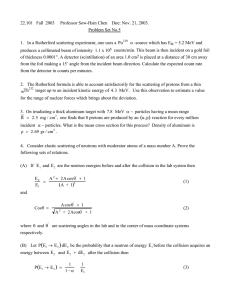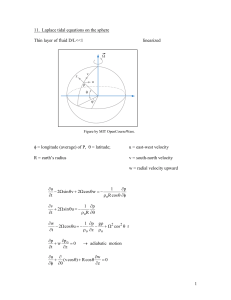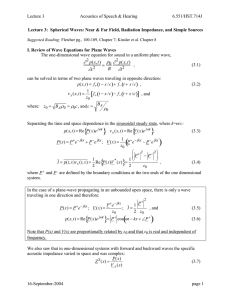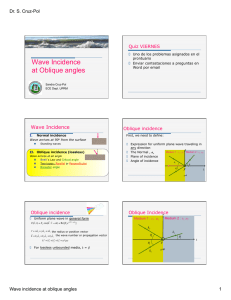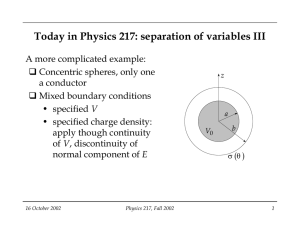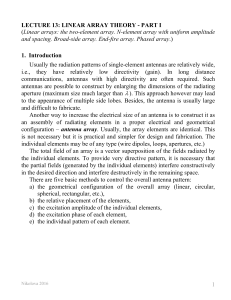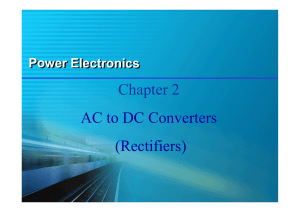Phy 132 - Assignment 2
advertisement
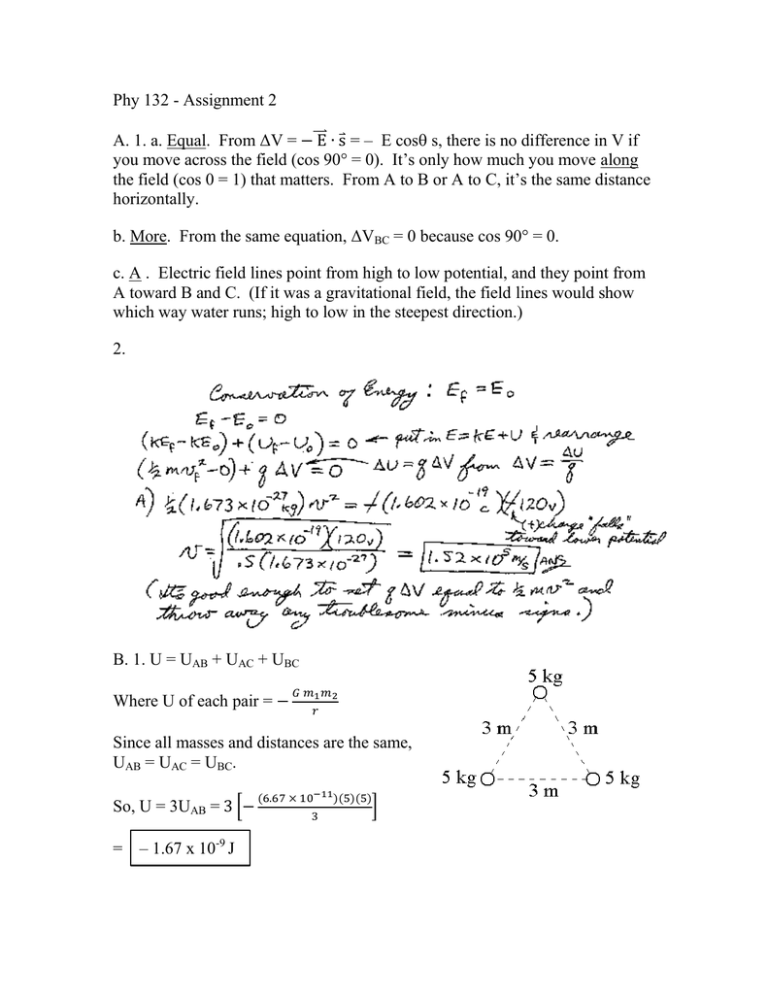
Phy 132 - Assignment 2 A. 1. a. Equal. From ΔV = ⃑⃑⃑ = – E cos s, there is no difference in V if you move across the field (cos 90° = 0). It’s only how much you move along the field (cos 0 = 1) that matters. From A to B or A to C, it’s the same distance horizontally. b. More. From the same equation, ΔVBC = 0 because cos 90° = 0. c. A . Electric field lines point from high to low potential, and they point from A toward B and C. (If it was a gravitational field, the field lines would show which way water runs; high to low in the steepest direction.) 2. B. 1. U = UAB + UAC + UBC Where U of each pair = Since all masses and distances are the same, UAB = UAC = UBC. So, U = 3UAB = [ = – 1.67 x 10-9 J ] 2. C. 1. The proton. One way to see this is to remember that field lines point from + to -, and to also remember that they point “downhill;” that is, toward lower potential. So, + is at the higher potential. 2. D. 1. Stays the same. Potential is a property of the field, and the field did not change. (If you were looking at V = U/q, U goes up by the same factor as q.) 2. E. 1. Any direction perpendicular to the field, such as y or z. Work = ⃑ = F cosθ s. You want a direction where cosθ = 0. 2. F. 1. Remember to treat V as a scalar. There is no direction; just add numbers. Remember to treat ⃑ as a vector. Think in terms of arrows on a picture. (Formulas only tell you how long the arrows are.) A positive charge’s field points away from it and a negative charge’s field points toward it, so 2.








